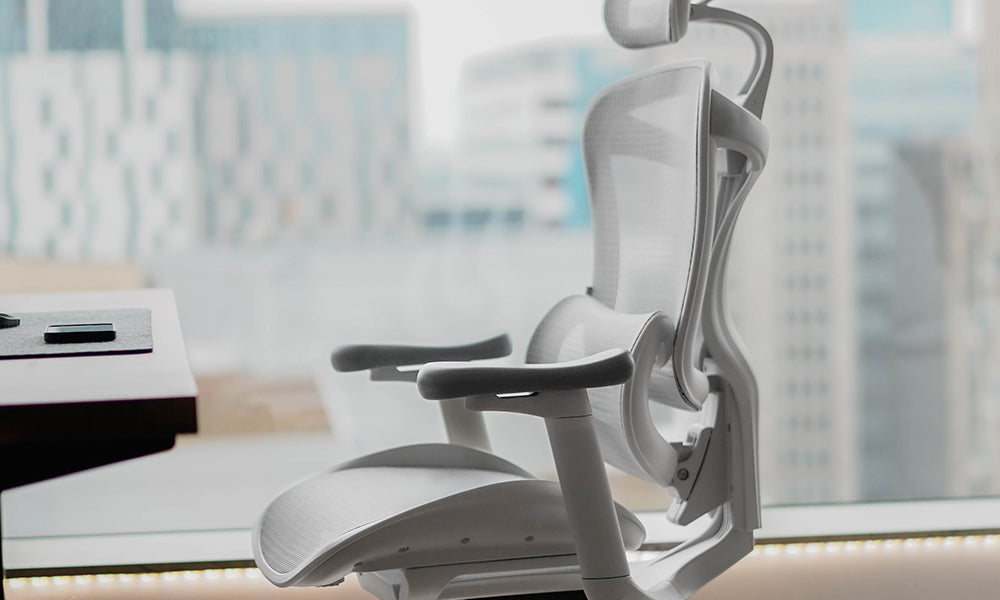In the hustle and bustle of our modern lives, we often find ourselves spending long hours seated, whether it be at work, in front of a computer, or during our leisure time. Prolonged sitting can lead to various health issues, and one area that often bears the brunt of this sedentary lifestyle is our lower back. Lumbar support has emerged as a crucial element in addressing this concern, offering a solution to alleviate discomfort and promote better spinal health. In this comprehensive guide, we will delve into the intricacies of lumbar support, exploring its benefits, the science behind it, and why you need it on your chair.
Understanding Lumbar Support
To comprehend the significance of lumbar support, it's essential to first understand the anatomy of the lower back. The lumbar region, located in the lower spine, consists of five vertebrae (L1 to L5). This area bears a significant portion of the body's weight and is susceptible to strain, especially when sitting for extended periods.
Lumbar support refers to the additional ergonomic features incorporated into chairs to provide support to the lower back. These features typically include a curvature in the chair's design, adjustable lumbar pads, or specialized cushions. The primary goal is to maintain the natural curve of the spine and relieve stress on the lumbar discs and muscles.
The Science Behind Lumbar Support
Several scientific studies support the notion that proper lumbar support can contribute to overall spinal health. Prolonged periods of sitting without adequate support can lead to poor posture and increased pressure on the intervertebral discs, potentially causing discomfort and long-term damage.
Ergonomics, the science of designing environments to fit the user, plays a crucial role in the integration of lumbar support into chairs. A well-designed chair with proper lumbar support promotes a neutral spine position, reducing the strain on the lower back. This, in turn, can prevent the development of musculoskeletal disorders associated with poor posture.
Benefits of Lumbar Support
a) Alleviating Lower Back Pain
One of the primary benefits of lumbar support is its ability to alleviate lower back pain. A chair with proper lumbar support helps maintain the natural curvature of the spine, preventing the slouching that often contributes to back discomfort. This can be particularly beneficial for individuals with desk jobs or those who spend extended periods sitting.
b) Improving Posture
Poor posture is a common issue in today's sedentary lifestyle. Lumbar support encourages proper spinal alignment, reducing the strain on the muscles and ligaments that support the spine. As a result, individuals are more likely to maintain a healthier and more ergonomic posture, both during work and leisure activities.
c) Enhancing Comfort and Productivity
Comfort is a key factor in productivity. A chair with effective lumbar support ensures that individuals can sit comfortably for longer durations without experiencing fatigue or discomfort. This, in turn, can enhance concentration, focus, and overall work performance.
d) Preventing Long-Term Health Issues
Chronic back pain and poor posture can lead to more severe health issues over time. Lumbar support acts as a preventive measure, reducing the risk of developing musculoskeletal disorders, spinal misalignments, and other related health concerns.
Choosing the Right Chair with Lumbar Support
Now that we understand the importance of lumbar support, it's crucial to know how to choose the right chair for your needs. Factors to consider include the chair's design, adjustability, and the type of lumbar support it offers. Whether you opt for an ergonomic office chair, a gaming chair, or a simple task chair, ensuring it provides adequate lumbar support should be a priority.
Incorporating Lumbar Support in Different Settings
Lumbar support is not limited to office chairs. Its application extends to various settings, including car seats, home furniture, and even in-flight seating. Exploring how lumbar support can be incorporated into these different environments ensures that individuals can maintain spinal health and comfort throughout their daily activities.
DIY Lumbar Support Solutions
For those who may not have access to specialized chairs with lumbar support, or for individuals seeking additional solutions, there are various do-it-yourself (DIY) approaches to enhance lumbar support. From using rolled-up towels to investing in portable lumbar cushions, this chapter explores creative and cost-effective ways to improve lower back comfort.
Common Misconceptions About Lumbar Support
Despite its numerous benefits, there are common misconceptions surrounding lumbar support. This chapter aims to debunk myths and clarify misunderstandings, ensuring that individuals can make informed decisions about incorporating lumbar support into their daily lives.
Conclusion
In conclusion, lumbar support is a crucial element in promoting spinal health and mitigating the adverse effects of prolonged sitting. Whether you're working at a desk, gaming, driving, or simply relaxing at home, investing in chairs with proper lumbar support or implementing DIY solutions can significantly contribute to your overall well-being. Prioritizing spinal health today can lead to a more comfortable and pain-free tomorrow, making lumbar support a necessity rather than a luxury in our modern, sedentary lives.



